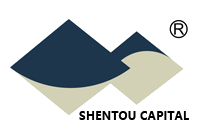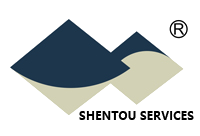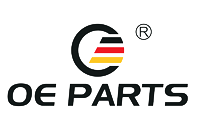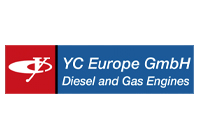Shentou provides on site services
such as factory audit and pre shipment
inspections in China
such as factory audit and pre shipment
inspections in China
Shentou Services
Long-term Suppliers Continuous Quality Compliance
In supplier selection and management, some large international purchasing consortiums or buyers will conduct on-site audits or sometimes even supplier management and product development, by either themselves or some authorized professional service providers, based on their own purchasing characteristics. No matter how the audits are conducted, we refer to these as second-party audits.
The key to “continuous” quality compliance for products purchased over a long-term period is to monitor the suppliers’ quality capabilities of their product realization processes through 2nd party audits.
What is process quality?
Process quality can be divided into four sub processes: development and design process quality, manufacturing process quality, use process quality, and service process quality. Here we’ll elaborate more on the manufacturing process quality capability:
Process quality capability, also known as engineering capability and process capability, refers to the ability to produce qualified products when the process is under control. It is the ability of the production process to meet the process quality requirement; it measures the internal consistency of the manufacturing process in order to obtain the minimum quality fluctuations under the most stable state.
What are the consequences of the product quality failing to continuously meet customer requirements?
For any supplier selected by the buyer, regardless of its quality management level, the supplier should have the ability to supply qualified products. Without the capability, they would not have been included in the qualified supplier list when suppliers are initially selected.
The selected supplier sometimes fails to continuously meet the quality requirements, in other words, the quality of one batch of products from the supplier can meet the customer’s requirements and is considered as qualified, while the quality of another batch or part of it cannot meet the customer’s requirements and are considered as unqualified. For the buyer, it is impossible to return the whole batch of goods, as it may directly cause the end customers to not receive the goods when the sales season comes, thus damaging the customer reputation.
In order to avoid rejection of the whole batch of goods, the buyers usually refer to the following: they will invest human and financial resources and resources needed for inspection to conduct incoming inspections with random samples for each batch and rely on the results to determine the acceptance of the batch in question. For inspections with random sampling, the risk is that the samples qualified through a sampling inspection do not necessarily mean that there is no unqualified product in this entire batch. Similarly, the unqualified samples from sampling inspection do not mean that all goods in this batch are unqualified.
Meanwhile, we know that when purchasing raw materials, a considerable part of factories will take into consideration the risk of defective items on production, so that the actual purchase quantity of raw materials is increased in order to fulfill orders through increased safety stocks. The additional purchase cost of raw materials will be factored into the final product costs which are borne by the final customers. The bottom line is that product quality failing to continuously meet customer requirements will also bring invisible and unnecessary losses to the customers.
How to watch for the quality capability of a supplier’s product realization process
How can we evaluate whether products continuously produced by a supplier can meet the quality requirements, in other words, can the quality of the supplier’s products be kept stable and satisfactory to the customer?
○ Understand the production process, with focuses on the main processes that affect the product quality;
○ Pay attention on-site to whether the main processes are implemented according to the process requirement, whether there are any operation deviations, and whether the inspection records meet the requirements;
○ More importantly, watch out for process risks while focusing on process execution compliance.
This writer once visited the production site of a formula mixing process at a brake pad factory. The process was to weigh and mix nearly 20 different chemical raw materials according to the requirements of the formula. For the brake pad production, the mixing process not only is labor-intensive and quite dusty but also requires a strong sense of responsibility. Moreover, it is a very confidential process. Being the lifeline of the enterprise generally, the process is usually operated by the owners, their relatives, or trusted employees, while other employees and outsiders are not allowed to enter the control room.
According to this writer’s on-site observations, there were more than 20 material bins on the left side, and each bin was also marked with stored materials. On the right side, there were purchased raw materials, with the names, addresses, and telephone numbers of the manufacturers on the bags. The operator needed to put the purchased raw materials into the bins with the corresponding names on the bins which were equipped with the function of opening the door when a QR code was scanned. The operator had a piece of paper on which the 20 or so QR codes were printed. When adding the raw materials into the bins, the operator would scan one of the QR codes printed on the paper, go to the right side to get the purchased raw material, pour the material into the bin with the open door and then manually close the door, and he would go through this process with all the materials.
This writer checked the on-site operation instructions, the feeding time, feeding amount, and other documents and records, and didn’t find any problems. He then asked the operator, “so you follow this process every time you add the materials into the bins. What if you put the raw materials into other bins by mistake?” The operator answered: “I have been working here for years and have never made any mistakes. My boss trusts me deeply. And I can tell all the materials here without even looking at the markings on the bags.”
The operator’s narrative, the on-site records, and operations all seemed flawless and the process apparently was in compliance with the requirement. However, from the perspective of the process risk, with the operator leaning on the boss’ blind trust and years of experience on his job, there are very high risks with this process. For example, with all QR codes printed together on a single piece of paper, there was no guarantee that the correct QR code was selected in the first place. The process, therefore, is very likely to produce non-conforming products.
Obviously, when we look at the process capability of suppliers, we should also pay more attention to the risks of process quality. Helping suppliers to avoid the risk is an important part of sustainable quality stability.
How can we reduce the risks of defective parts being produced and delivered by suppliers through 2nd party audits?
Before the audit, choose a proper timing, select qualified auditors, and then carry out the audit according to the pre-determined audit plan. in the meantime, it is also necessary to state the requirements for the supplier’s systematic documentation.
▍Audit timing selection
○ When developing new suppliers, we should evaluate the quality management system and the continuous supply capability of the new suppliers.
○ When exiting suppliers develop the quality management system, we should evaluate the quality management system and the quality control capability in the manufacturing process.
○ When the supplier uses new materials or there are changes in material, location, and process, or has major quality complaints and delivery delays, we should evaluate the quality control capability and product quality management in the manufacturing process.
○ For suppliers with stable long-term supply quality, we should evaluate the quality management system, process realization capability, and product quality on a regular basis.
▍Auditor’s compliance qualification
The selection of auditors is one of the key factors to ensure the continuous quality stability of the supply. Basic requirements for qualified auditors: select auditors with professional knowledge and audit experience according to the process/product characteristics of the suppliers to be audited, to help the supplier identify high risks and reduce them.
▍Audit planning
We suggest that the audits be planned with the following aspects: operations of quality management system, continuous supply capacity, process quality control ability, product quality control ability, environmental and occupational health and safety assurance ability, etc. Different audit schemes, objectives, and key audit points should be used depending on the supplier’s ability to continuously supply and stabilize the quality.
For instance, when there are serious delivery delays with the supplier, we need to plan the audit on the supplier’s finance, process, technology, and production capacity, in order to assess the supplier’s continuous supply capacity and determine whether the supplier’s supply capacity is up to standard, so as to reduce the risk of supply interruption. We need to pay special attention to the evaluation of suppliers’ continuous supply capability.
Currently, about 50% – 70% of the factories in the aftermarket cannot guarantee the effective implementation of the control plan requirements. Therefore, when we pay attention to the supplier’s process control capability, we sometimes overlook the many process quality risks, which unfortunately might lead to hidden quality dangers in the final products.
▍Requirements for suppliers’ systematic documentation
For qualified suppliers with long-term cooperation, we need suppliers to provide systematic documentation, including quality manual, procedure documents, quality assurance agreement.
The contents of change management include personnel, technology, process, materials, production/testing equipment, production site, etc. For safety-related parts, the supplier should timely inform the buyer of the changed management requirements including PPAP and control plan. Change management is the most important method to control the quality risks in the batch supply stage. We should assess the supplier’s process quality capability and continuous supply capability based on the timing of the changes by the supplier.
This article was first published in May, June & July of 2020
keywords:Product Development Project Management Services Post COVID-19 Factory Audits







